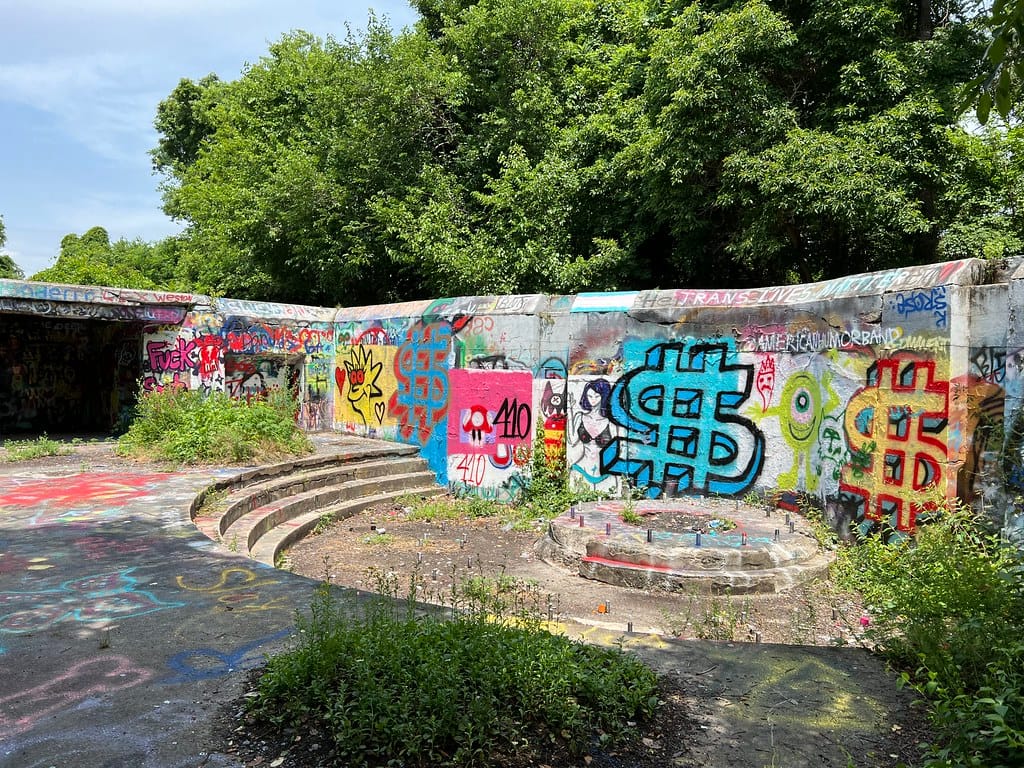Fort Armistead stands as a captivating blend of history and urban art, a testament to Baltimore’s resilience and ever-evolving story. This abandoned fort, once a vital coastal defense, now invites exploration, offering a unique glimpse into the past while showcasing the vibrant creativity of the present.
Baltimore’s Abandoned Fortress: A Journey Through Time
Fort Armistead isn’t merely a collection of decaying walls; it’s a living museum where history intertwines with modern art. Located in Baltimore, this hidden gem offers a unique urban adventure, inviting visitors to step into its overgrown grounds and uncover the secrets held within its crumbling embrace.
The Endicott Program: Fortifying America’s Coasts
Fort Armistead’s origins lie within the Endicott Program, a national initiative launched in the late 19th and early 20th centuries to modernize America’s coastal defenses. Constructed between 1897 and 1901, the fort, named after Major George Armistead, a hero of the War of 1812, played a crucial role in safeguarding Baltimore Harbor. Alongside Fort Howard, Fort Carroll, and Fort Smallwood, Fort Armistead formed a formidable shield, protecting the city from potential maritime threats.
From Military Might to Urban Canvas
Decommissioned in 1923 and transferred to the Baltimore City Department of Recreation and Parks in 1928, Fort Armistead embarked on a new chapter. Its mission shifted from military defense to public recreation, transforming the once-formidable fortress into a verdant urban park.
A Fusion of Decay and Art: Exploring Fort Armistead Today
Today, Fort Armistead presents a unique juxtaposition of decaying ruins and vibrant street art. The passage of time and the elements have bestowed upon the fort a rugged, almost romantic, aesthetic. Layers of colorful graffiti adorn its walls, creating a captivating blend of history and contemporary expression. This striking combination draws urban explorers, photographers, and those seeking a unique perspective on Baltimore’s past and present. The construction of the Francis Scott Key Bridge in the 1970s significantly altered access to the fort and its surrounding landscape. Later, the bridge’s partial collapse in 2024 added another layer to the fort’s story, highlighting its enduring presence amidst change and challenge.
Balancing Preservation and Exploration
Fort Armistead’s unique blend of history and urban art presents both opportunities and responsibilities. While attracting those fascinated by abandoned places and the stories they tell, it underscores the importance of respectful exploration. Balancing public access with the preservation of this historical site is crucial to ensure that future generations can experience this tangible piece of Baltimore’s heritage.
Unraveling the Tunnel Myth: Fort Armistead and Fort Carroll
A persistent rumor suggests a secret tunnel connecting Fort Armistead to Fort Carroll. While captivating, this notion lacks historical evidence. Constructing such a tunnel beneath the water would have presented significant engineering challenges during the forts’ construction and offered little strategic advantage. Each fort, designed to provide overlapping fields of fire, ensured the harbor’s defense from various angles. Fort Armistead does possess tunnels, but these served practical purposes, such as ammunition storage, contained entirely within the fort’s walls.
Some may argue that the absence of evidence itself points to secrecy. However, the logistical hurdles and lack of any documentation suggest the tunnel’s existence is unlikely. While history can offer surprises, the current evidence suggests that the tunnel remains a fascinating local legend. Those interested in local history and culture might also enjoy exploring the Handley Library Winchester VA. It’s another historical gem offering knowledge and cultural enrichment.
Who Owns Fort Armistead Park?
Fort Armistead Park, with its blend of historical ruins and recreational spaces, raises the question of ownership. This once-mighty fort, built between 1897 and 1901 as part of the Endicott Program and named after War of 1812 hero Major George Armistead, transitioned from military to civilian control in 1928. Today, it is managed by the Baltimore City Department of Recreation and Parks. This entity oversees the park’s maintenance, rules, and future development, balancing preservation efforts with public access. While the city manages the park, the land itself likely falls under the broader ownership of the Baltimore City municipality. Finding the balance between preserving the fort’s historical integrity and enhancing its recreational appeal is an ongoing discussion involving city officials, historians, and the community. Fort Armistead Park stands as a testament to Baltimore’s rich history and the city’s commitment to preserving its unique heritage.
- Unlock Water’s Symbolism: A Cross-Cultural Exploration - April 20, 2025
- Identify Black and White Snakes: Venomous or Harmless? - April 20, 2025
- Unlocking Potential: Origins High School’s NYC Story - April 20, 2025
















1 thought on “Exploring the Ruins of Historic Fort Armistead: An Urban Adventure in Baltimore”
Comments are closed.